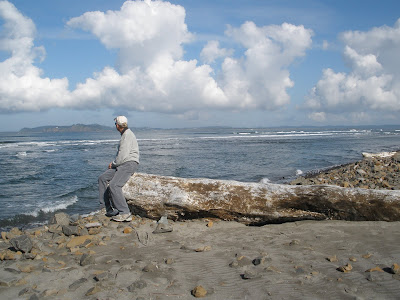


Well, we made it: Yellowstone National Park. And as you see on the map this park is huge, encompassing 3,468 square miles or 2.2 million acres, comprising of lakes, canyons, rivers, mountain ranges. It is centered in northwest Wyoming and reaches into Montana and Idaho.
Yellowstone Lake is one of the largest high altitude bodies of water in North America. It is also home to the Yellowstone Caldera, the largest supervolcano on the continent.

The park is the centerpiece of the Greater Yellowstone ecosystem including the ever popular Old Faithful Geyser. It takes several full days of driving just to get around this park. Then, you want to go back for more.
This park is hot for several reasons, including the fact that there are so many thermal features: geysers, hot springs, mudpots, and steam vents are everywhere.

Here are some dominant impressions we carry away:
- What foresight to begin the national parks idea in 1872. There was resistance by lobby groups at the time that this beautiful area should be exploited for its natural resources and be developed.
- We saw a scattering of wildlife: elk, buffalo, bears, wolves. The wolves were finding mice in the river bed, the baby cub frolicking at the river's edge, the bison feeding undisturbed in an extensive grassy plain.
- Most of the park is at about 8.000 ft. elevation. Temperatures went down to freezing over night at our campsite and we were glad to enjoy our heater for the first time.
- Old Faithful is not a cliche. We were deeply moved by her performance every ninety minutes. We saw it twice as we walked around the extensive walkways around the area. In the picture you see the new multimillion dollar interpretive centre which complements the pristine lady. Not to be undone, her lesser sibling a kilometer away put on an equally wonderful show.
- In 1988 there was a devastating fire which burned 1/3 of the park's beautiful pines. Now we see evidence that the burn rekindled a robust revival.
- Little discoveries abound. We saw an 8 meter tall petrified redwood tree which had been preserved by a volcanic cataclysm millions of years ago. It revealed that at one time the park had more tropical vegetation.
- Flowing fresh water abounds in the extensive lake, waterfalls, and rivers. Nothing is so inspiring as you appreciate its power.
- The thermal activity is incredible. The Mammoth Hot Spring deposit is extensive and is built up over 15 meters high.
- The park is maintained very well with friendly and knowledgeable rangers at a number of interpretive centers.

The visit to this incredible park is a portrait of nature's wonderful choreography.
Our next stop is the state of Washington and the wonderful coastal parks which await.

 We were overwhelmed by the polished granite edifices that surround a friendly valley with the Merced River, calming meadows, and towering pines.
We were overwhelmed by the polished granite edifices that surround a friendly valley with the Merced River, calming meadows, and towering pines.
 We were glad that we included the one hour drive up to Glacier Point to behold the spectacular aerial view of the park, and the Mariposa Grove which includes some impressive old growth sequoia trees.
We were glad that we included the one hour drive up to Glacier Point to behold the spectacular aerial view of the park, and the Mariposa Grove which includes some impressive old growth sequoia trees.






























